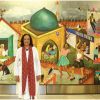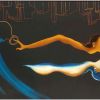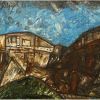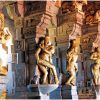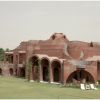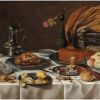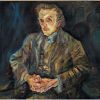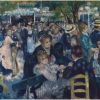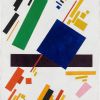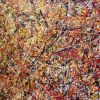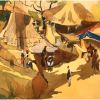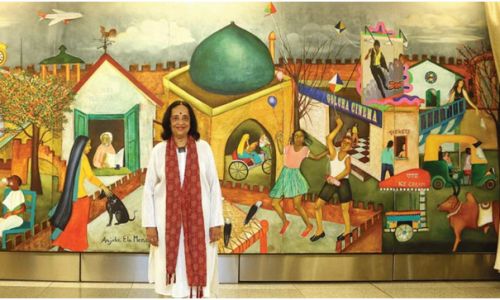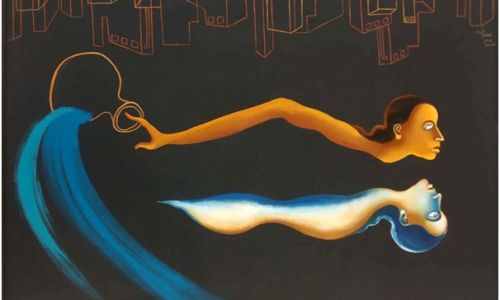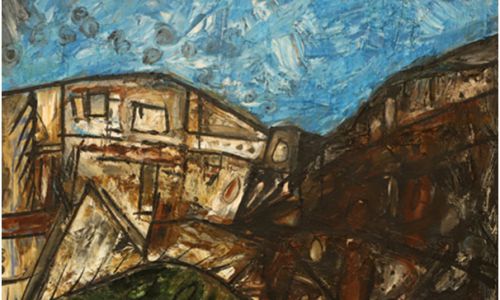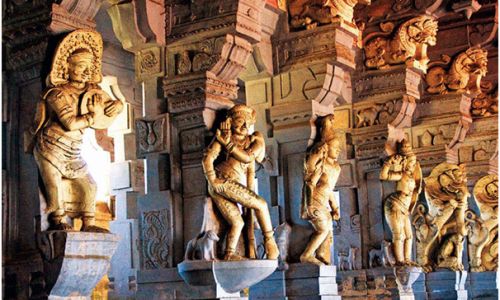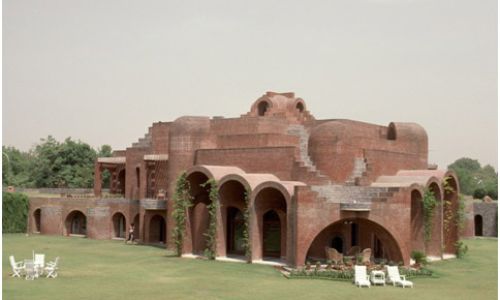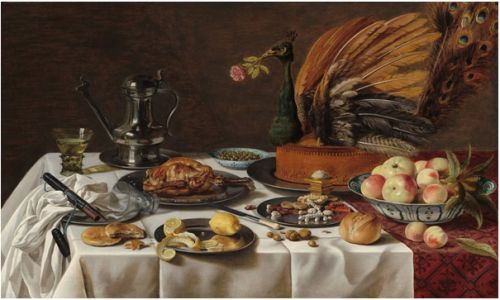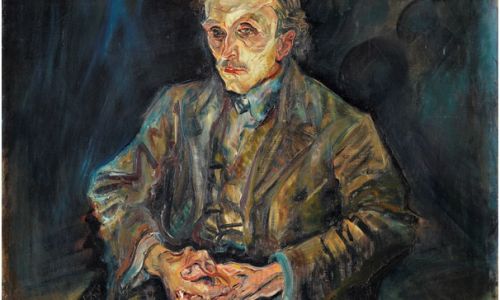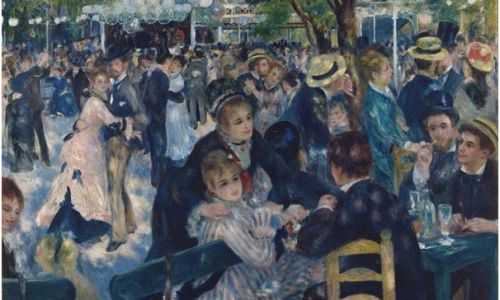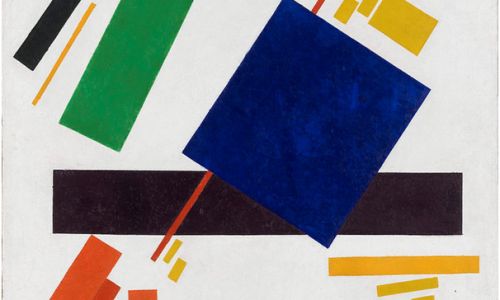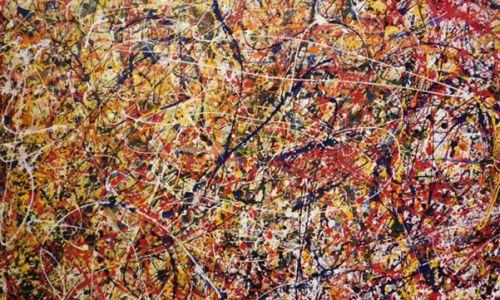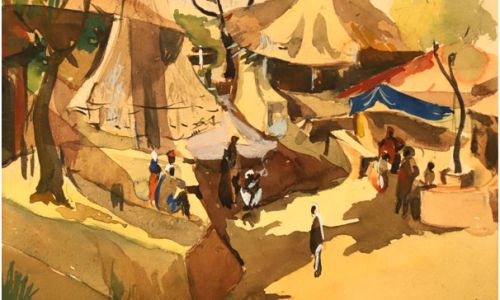Indian Folklore in Contemporary Art
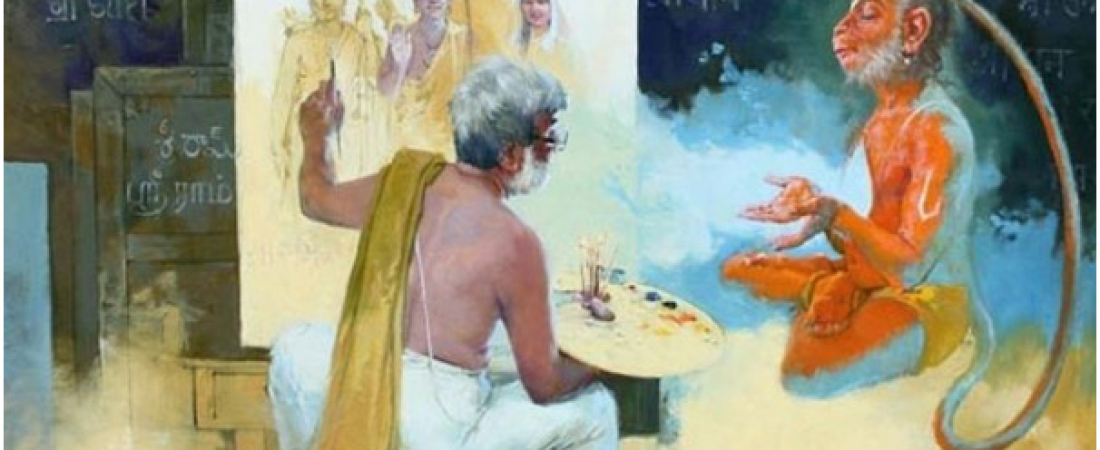
India has one of the oldest oral traditions in the world owing to the Subcontinent’s long history of civilization. As a result, several oral stories that are collectively called ‘folktales’, have been passed down through centuries to the current generation. These folktales include Epics, fables, mythological stories, stories praising Kings and glorified stories of local heroes represented in the form of books, poetry, music, dance, bhakti hymns, drama, traditional and folk art, etc. These ‘Indian’ folktales travelled through regions and cultures within India for thousands of years, circulating and adapting into our collective cultural identity as an Indian.
Although these stories were spread from one region to another orally- through saints and poets, the representation of these stories in the Indian traditional and Folk Art has kept the stories alive even today. Historians trace these stories back to more than 2500 years ago as there are many pieces of evidence left of these stories in the temple carvings, sculptures, frescos, and books. The most popular of the Indian Folktales are the epics Ramayana and Mahabharata, Indian Mythological stories of Lord Shiva and Lord Vishnu and their many avatars, Jataka Tales, Panchatantra, Hitopadesha and more recently Amar Chitra Katha. These stories have given us various interpretations and adaptations and remain a significant part of our collective identity.
It is was during the British rule that proper research had surfaced for Indian folklore in an attempt to better understand the Indian value system for administrative reasons. A group of Christian missionaries at the time also sought to learn Indian folklore so they could create religious literature for evangelistic purposes. After Independence in 1947, Indian scholars and academicians began to search for their national and local identities through legends, myths, and epics. By the 1970s, Academic institutions and universities in India had established departments to study the folklore of their respective regions, particularly in south India, to preserve their cultural identity and languages. Since 1990, a number of epics have been collected and translated into English, with critical notes and introductions. Today, we have comic books, cartoons, television drama and even movies based on the epics and local stories in the mainstream culture. The Indian folklore is also studied in schools as part of moral teachings and represented in school plays and dances.
With half of the Indian identity consumed in the Indian folklore, it is not surprising to see these stories being represented in the Indian Folk, Modern and Contemporary Art. By definition, Indian Folk Art predates Indian Modern Art and therefore becomes a fascinating study of the representation of the folklores by different cultures within India. Madhubani paintings, Tanjore Paintings, Rajput Paintings, Pattachitra, Kalamkari, Kalighat Paintings, Warli Art, and many more, are examples of Folk Art that depict mythological stories and ritualistic motifs. During the early 1900s, when Indian artists formed groups to promote Indianness, many of the Folk-Art techniques and subjects appealed to them. It wasn’t long before folklore translated its way to Indian Modern Art as well.
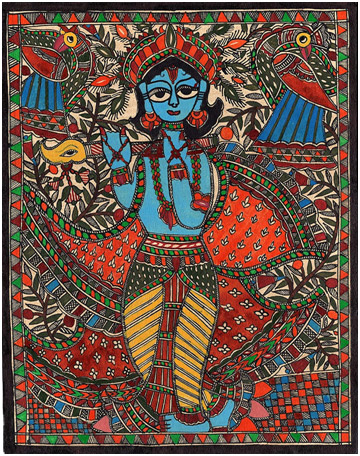
Madhubani Art

Tanjore Painting
Since folklore was associated with the Indian identity, many artists who were part of the Bengal School of Thought adopted these themes and painted scenes from Indian mythology and epics Ramayana and Mahabharata. A few of these artists were Laxman Pai and Ganesh Pyne. Apart from them Raja Ravi Verma and Srilankan Artist George Keyt are also famously known to depict mythological characters in their works. Some young contemporary artists include painter Vasudeo Kamath, illustrator Anirudh Sainath and artist Jayasri Burman.
Laxman Pai

Laxman Pai | Image Courtesy: Dhoomimal Gallery Collection
Artist Laxman Pai has represented his interpretation of the Epic Ramayana through painting a series of important scenes from each part of the epic. Some of the paintings narrate an entire Khaand (part) of the story in one single painting whereas some depict paintings based on other shorter episodes. The above painting is in watercolours and shows the marriage of Lord Rama and Sita.
His thoughts on the series were, "My work do not preach a moral. They are spiritual impression. The bold and sensational colours set my narrative into a pitch of intensity. The other things are also given colour and significance by the degree to which they reflect and dramatize the theme in tone and texture. I have convincingly used figurative drawings in their folk sensibility. The brush strokes are bold and cut across the contours of the linear figures in a pivotal motion."
Ganesh Pyne
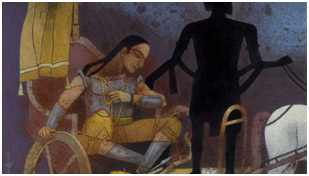
Ganesh Pyne
Ganesh Pyne’s works have extensively included depictions of scenes from the Epic Mahabharata. He was brought up in a religious atmosphere and recollects his grandmother telling him these mythological stories. He later incorporated them in the majority of his work. The above painting is called ‘Charioteer’ and is inspired by a scene from the epic Mahabharata. Pyne has depicted the chariot of Arjuna on one side with a half-painted horse on which there is a silhouette of Lord Krishna. Here the artist has shown the agony of Arjuna over unwillingness to fight the battle against his loved ones.
Raja Ravi Verma
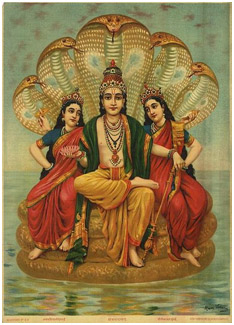
This painting depicts Lord Vishnu and his wives on Shesh Nag. This artwork was displayed at the India Art Fair 2020 earlier this year and caught many eyes owing to its realistic yet mythical representation of Lord Vishnu.
George Keyt
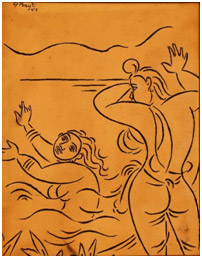
Image Courtesy: Dhoomimal Gallery Collection
George Keyt is a Srilankan by nationality, but since Sri Lankan and Indian cultures are very similar, he drew inspiration from the Indian Folktales. This ink on paper artwork is a scene from the story about the Indian river Kaveri.
Vasudeo Kamath
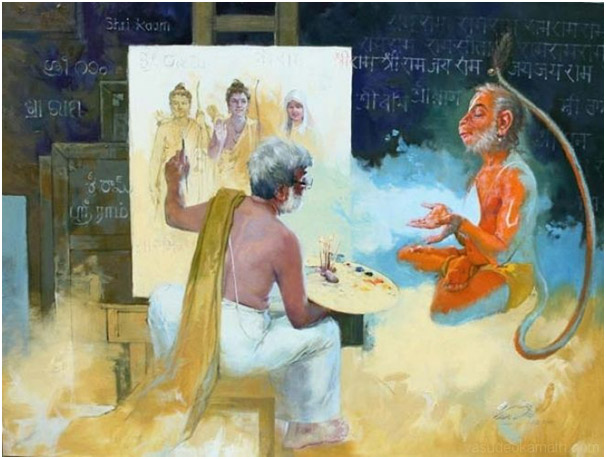
Vasudeo Kamath is an alumnus of Sir J. J. School of Arts and enjoys painting mythological characters in his works. His artwork titled ‘Heart is where soul is’ is revered as one of his bests. It is an interesting representation of how the stories pour out into real life. He is seen painting Lord Ram, Sita and Laxman while talking to Hanuman who is seemingly floating in his studio.
Anirudh Sainath
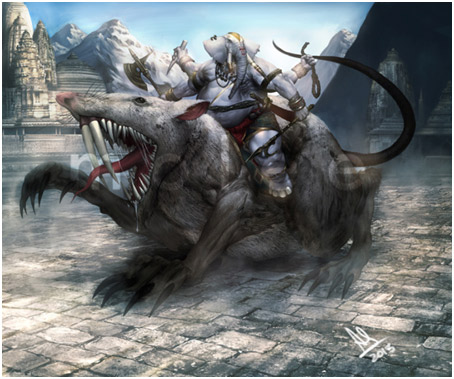
This illustration depicts a modern representation of Lord Ganesha on his wahan (vehicle) and has a game inspired aesthetics to it. This only shows the appeal and popularity of the mythological characters in the Hindu religion.

